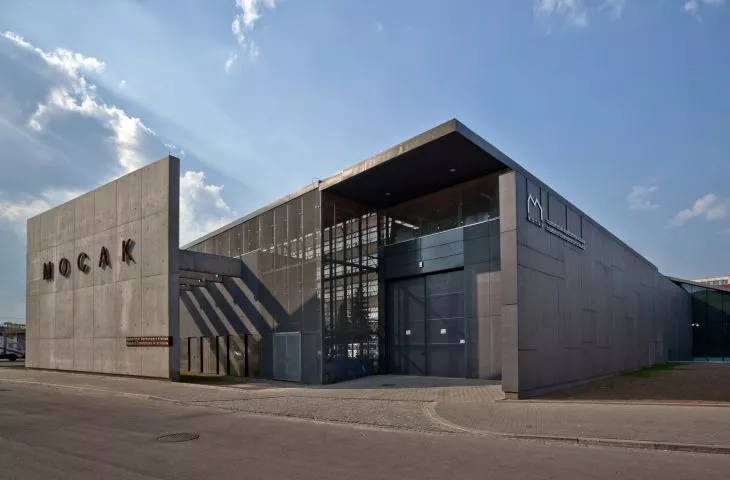Attention art students and this year's graduates! Before you is a fantastic opportunity to show your works in one of the exhibition spaces of the Museum of Contemporary Art in Krakow, Re Gallery. We encourage you to participate in the competition for a series of artistic works addressing the theme of Krakow's Zablocie in the context of its history and change of identity after the collapse of industrial plants.
The Museum of Contemporary Art in Krakow MOCAK and the Foundation for Visual Arts invite you to participate in a competition for a series of artistic works, a selection of which will be presented in an exhibition at MOCAK, in the Re Gallery, as part of Photomonth in Krakow 2020.
why Zablocie?
The theme of the contest is about Krakow's Zabłocie in the context of its history and changing identity after the collapse of large industrial plants. In the 14th century, Zabłocie belonged to Kazimierz which was then a separate city, which later, as a result of the partitions, became part of Austria. At the turn of the 19th and 20th centuries, industrial plants and railroads developed in Zablocie, and storage halls were built. After Poland regained its independence, Zablocie already functioned as part of Kraków. During World War II, the Plaszow labor camp and ghetto were established nearby, and transports of Krakow Jews to extermination camps were organized from Zgody Square (now Bohaterów Getta Square), adjacent to Zabłocie. It was also here, in the enamelware factory known as Oskar Schindler's Deutsche Emailwarenfabrik (DEF), that prisoners of the nearby Plaszow sub-camp worked.
After the war ended, Zabłocie continued to serve as an industrial district, but the decline of industry in the 1990s led to the need to build a new identity for the area in the context of the city's increasingly thriving development. Zabłocie became a popular destination for tourists. Steven Spielberg's film Schindler's List (1993), among others, contributed to this. What's more, two museums were established on the site of the former factory: a branch of the Historical Museum of the City of Krakow (now the Museum of Krakow) called Oskar Schindler's Emalia Factory and the MOCAK Museum of Contemporary Art in Krakow. Today, Zabłocie is intensively developing no longer as an industrial area, but as a place of artists' activities and a fashionable residential district.
how to submit your participation?
In order to participate in the competition, you must send:
-
a description of the competition project and images of the works with complete captions with information about the title, date, technique and dimensions (the organizers ask that submissions be sent in PDF format, preferred volume up to 10 pages, maximum size: 20 MB),
-
a short biographical note (maximum 1800 characters), includingan e-mailaddress.
Submissions should be sent to zgloszenia@photomonth.com, with "MOCAK/MFK Competition" in the subject line of the message. Sending an application is tantamount to agreeing to the terms and conditions of the contest as set forth in the Contest Regulations. It is important to include the RODO information clause in the application.
The winners of the competition will be selected by a five-member jury, consisting of: two representatives of the Museum of Contemporary Art in Krakow MOCAK, two representatives of the Month of Photography in Krakow and one external juror.
The selected series will be presented in an exhibition at Re Gallery from April 24 to September 20, 2020.
deadlines
submission of entries: up to and including 31.12.2019.
announcement of results: 5.02.2020 r.
vernissage: 23.04.2020.
exhibition duration: 24.04-20.09.2020 r.
More information on the organizers' website.
Good luck!














